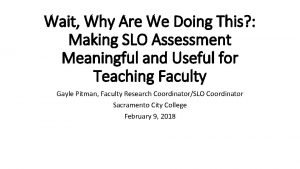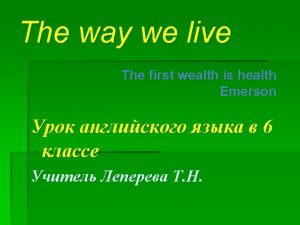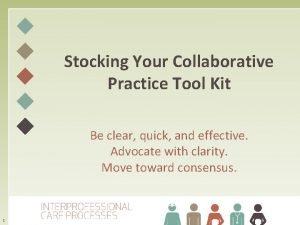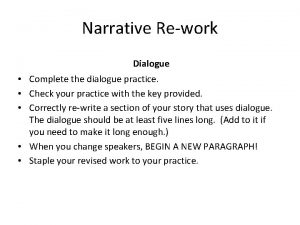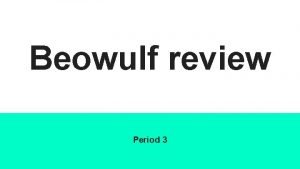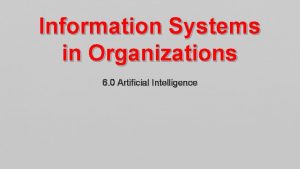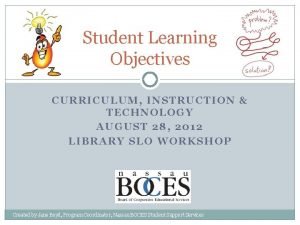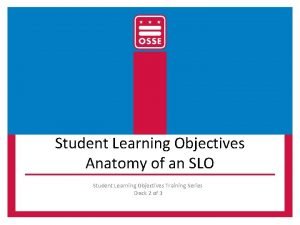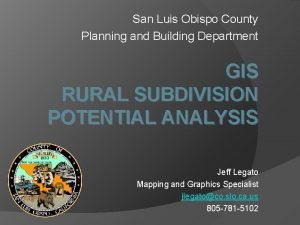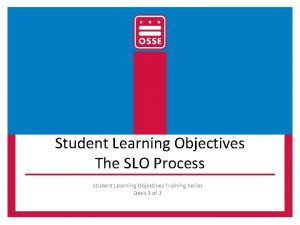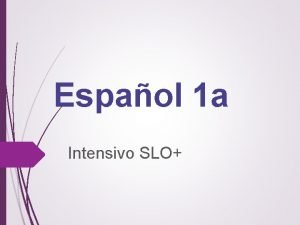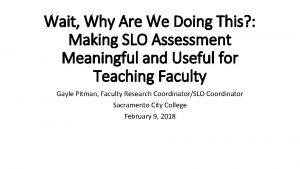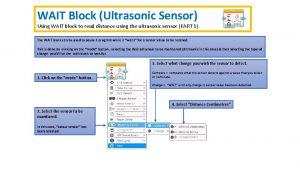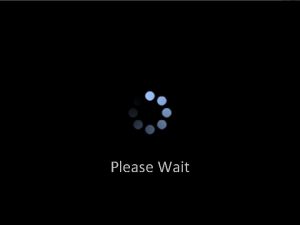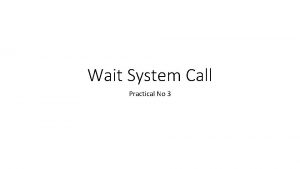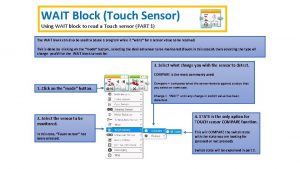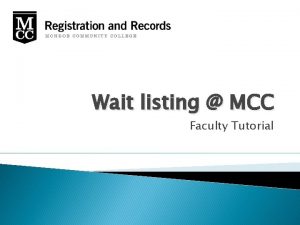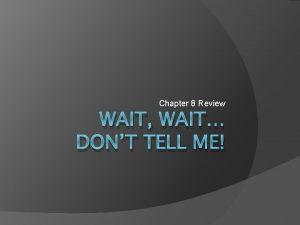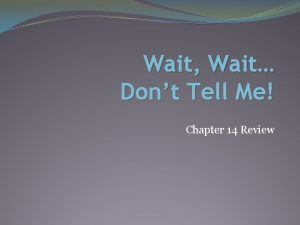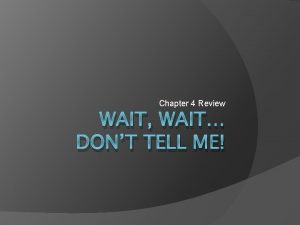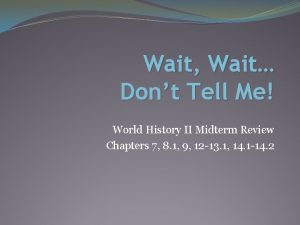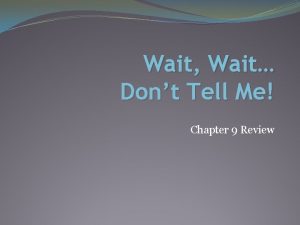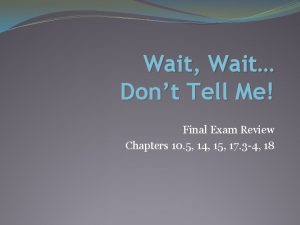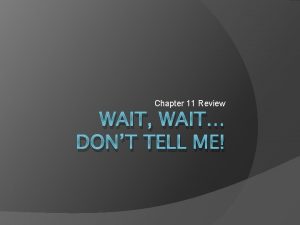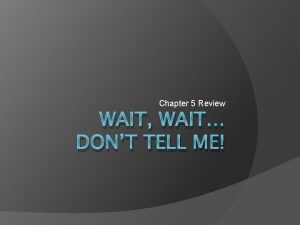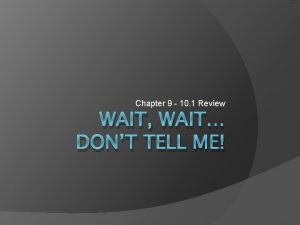Wait Why Are We Doing This Making SLO



















- Slides: 19

Wait, Why Are We Doing This? : Making SLO Assessment Meaningful and Useful for Teaching Faculty Gayle Pitman, Faculty Research Coordinator/SLO Coordinator Sacramento City College February 9, 2018

Let’s start with a question. . . Why did you become an educator?

Why people pursue careers in education: • Intrinsic factors • • I love my subject. Teaching is fun. The job is varied and enjoyable. I learn a lot from my students. • Extrinsic factors • • I get summers off. The pay is good. I get health benefits and a pension. I couldn’t get a job anywhere else. • Altruistic factors • I want to help students succeed. • I care about student equity. • I want students to have access to a quality education. Wait – we don’t become educators because we love SLO assessment? ? ?

Case example: History The problem: They weren’t doing their SLO assessments! Why? • I don’t know how. • I don’t have time. • I don’t care about SLO assessment.

The History solution? Create SLOs that are more meaningful, and relevant to what instructors are doing in the classroom.

Before. . . Upon completion of this course, the student will be able to: • identify and correctly use basic historical terminology, and distinguish between primary and secondary sources as historical evidence. • analyze multiple causes for an historical event, and properly evaluate why that event happened. • identify various interpretations used by historians to explain United States history up to the Civil War. • identify the major time periods and relevant geography of United States history up to the Civil War. • analyze and evaluate the major economic, social, political, and cultural developments in United States history up to the Civil War. • analyze and evaluate the experiences and conflicts of diverse groups of people, including “common people, ” in United States history up to the Civil War. • analyze, describe, and explain the motives, settlement and organization of European colonies in North America, and the impact on the Native American environment and cultures. • trace the development of racial slavery in America, explain the reasons for its institutionalization, and analyze the influence of Africans and African culture on American society and institutions. • analyze the events of the American Revolution and the creation of the United States, including state and national Constitutions, and explain the rationale behind these developments. • analyze the philosophical, intellectual and cultural influences on the development of American political and social institutions.

. . . and after. Upon completion of this course, the student will be able to: • identify, explain, and evaluate the major historical forces in United States history through Reconstruction. (Pro. Lo 4) • generate significant open-ended questions about United States history, and critically analyze primary and secondary sources to construct oral and written historical arguments. (Pro. Lo 3) • evaluate and analyze the diverse experiences and perspectives of multiple ethnic groups in United States history through an examination of conflicting narratives and power imbalances. (Pro. Lo 1) • demonstrate an understanding of the interconnectedness between United States and global history to foster active civic engagement. (Pro. Lo 2) • apply historical knowledge and historical thinking to contemporary issues. (Pro. Los 2, 3, 4) • collect, sift, organize, question, synthesize, and interpret complex material. (Pro. Los 1, 2, 3, 4)

Case example: Early Childhood Education The problem: They weren’t doing their SLO reports! Why? • I don’t know how. • I don’t have time. • I don’t care about SLO assessment.

The Early Childhood Education solution?



Case example: Math The problem: They were doing their SLO assessments! And their SLO assessments indicated generally high or moderate achievement! But. . . They had low course success rates. AND they had low morale.


Despite such glowing findings. . . Fewer than 50% of students were passing Math 120 with a C or better.

The Math solution? Shift from points-based grading to Outcomes-based grading Reframing what “grades” mean helped math faculty get on board with using SLO assessment results. It also helped them be more effective with students.

Point-based grading systems • These grading systems are based on the assumption that the assignments and assessments facilitate and demonstrate the students’ achievement of the outcomes • In point-based grading systems, the relationship between achievement of outcomes and final grade is implied and indirect. • In some cases, there is no relationship between SLOs and grades.

Outcomes-based grading systems • Final grade tied to the level of achievement the student documents for each outcome; • Student has responsibility to provide evidence of achievement and to monitor his/her performance; • Grading criteria are very clear; and • Passing grade requires basic competence in every expected learning outcome.

In summary. . . • Find out what people are passionate about. • Ask faculty (in a non-judgmental way) why they’re not doing SLO assessment. • Then problem-solve using those two pieces of information.

Questions? Comments?
 Insidan region jh
Insidan region jh Wait what are we doing
Wait what are we doing Why why why why
Why why why why Anything worth doing is not necessarily worth doing well
Anything worth doing is not necessarily worth doing well Doing nothing is doing ill
Doing nothing is doing ill Sbar example for pneumonia
Sbar example for pneumonia Hooray cheered gilda. does that mean we can stay?
Hooray cheered gilda. does that mean we can stay? What does beowulf do before he swims back to land
What does beowulf do before he swims back to land Wait but why
Wait but why Slo goal statement examples
Slo goal statement examples Slo goal statement examples
Slo goal statement examples Learning target examples math
Learning target examples math Class objective
Class objective Slo planning department
Slo planning department Nationaal expertisecentrum leerplanontwikkeling
Nationaal expertisecentrum leerplanontwikkeling Jak šlo šídlo do lesa
Jak šlo šídlo do lesa Slo process
Slo process Cal poly slo portal
Cal poly slo portal Slo by me
Slo by me Slo+
Slo+

